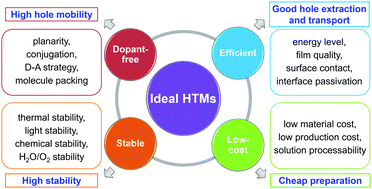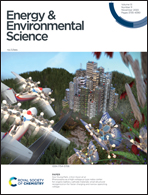Toward ideal hole transport materials: a review on recent progress in dopant-free hole transport materials for fabricating efficient and stable perovskite solar cells
Abstract
Since 2009, perovskite solar cells (PSCs) have witnessed dramatic developments with the record power conversion efficiency (PCE) exceeding 25% within a single decade. One bottleneck for the commercialization of PSCs is the lack of stability due to the commonly used hole transport materials (HTMs) with dopants. These hygroscopic dopants not only deteriorate the long-term stability due to moisture ingress and ion diffusion, but also increase the complexity and total cost. Therefore, the development of dopant-free HTMs is of great significance. In this work, the recent progress in dopant-free HTMs, including organic small molecules, polymers, organometallic compounds, and inorganic materials, has been systematically reviewed and summarized. To bring current dopant-free HTMs closer to the ideal ones, detailed solutions for making dopant-free HTMs more efficient, stable, and cost-effective are analyzed and discussed. In the end, we try to answer the key scientific questions such as what makes HTMs dopant-free, how to obtain the maximum PCE for a new dopant-free HTM, and what is the most efficient way to find ideal dopant-free HTMs based on the literature survey and our own understanding. With continuous efforts in developing dopant-free HTMs, PSC commercialization can be realized in the near future.



 Please wait while we load your content...
Please wait while we load your content...